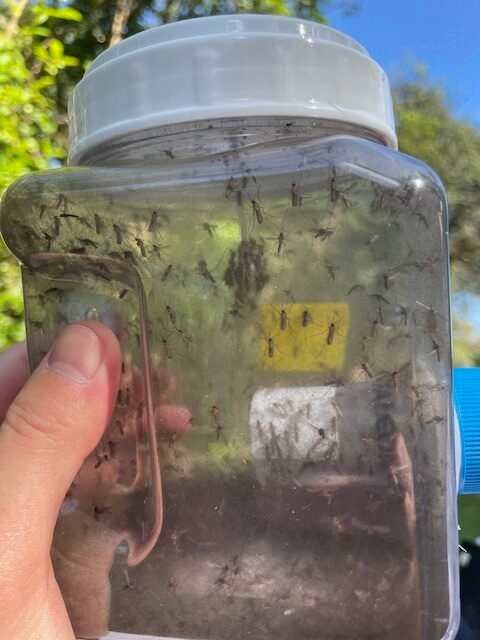Your cart is currently empty!

How to Capture Mosquitoes Alive for Research
Why Capture Live Mosquitoes?
Live mosquito collection is essential for:
- Species identification – Different mosquito species carry different pathogens.
- Disease surveillance – Testing specimens for viruses like West Nile, Zika, or Dengue.
- Behavior studies – Understanding feeding, breeding, and resting patterns.
- Population monitoring – Measuring effectiveness of mosquito control programs.
Instead of killing on capture, live methods preserve specimens for observation and laboratory analysis.
Essential Tools for Live Mosquito Collection
At Entovate, we design specialized equipment for field researchers, vector control agencies, and public health departments.
1. Field Aspirators:
- Ideal for catching mosquitoes from their resting sites, including blood-engorged females.
- Portable & Lightweight — Perfect for on-the-go sampling.
- Recommended for indoor resting collections, animal shelters, and vegetation sampling.
2. Resting Traps:
- Mimic the shaded, humid resting sites mosquitoes seek after blood feeding.
- Best for collecting engorged females of Culex, Culiseta and Anopheles that can carry human pathogens.
- Minimal disturbance and easy specimen retrieval.
3. Gravid Traps:
- Target gravid females seeking to lay eggs — often infected and valuable for disease monitoring.
- Use fermented infusions to attract mosquitoes.
- Highly effective for Culex species capture in public health work.
4 Light Traps:
- Attract host-seeking females using light (and often CO₂) as lure.
- Capture multiple mosquito species.
- Ideal for overnight deployments in multiple habitats.
Step-by-Step: Setting Up in the Field
- Define Your Goals – Species ID, virus testing, behavioral study, or population monitoring.
- Select the Right Trap Type – Match your targets to the best trap methods.
- Choose Locations Strategically – Near breeding areas, animal shelters, shaded vegetation, or water bodies.
- Prepare Equipment – Charge batteries, fill lure containers, check nets and collection cups.
- Set Traps at Optimal Times – Dusk and overnight for light traps, early morning for resting traps, flexible for aspirator sampling.
- Record Field Data – GPS coordinates, habitat notes, weather, and capture times.
- Transport Specimens Carefully – Keep mosquitoes alive and unharmed for lab work.
Safety & Handling Guidelines
- Wear protective clothing (long sleeves, pants, gloves).
- Consider repellents to avoid bites.
- Follow protocols for pathogen risk prevention.
- Keep traps clean to avoid contamination between sites.
Where to Get Professional Mosquito Collection Equipment
Using high-quality, research-proven tools ensures more reliable data and healthier specimens for analysis.
Entovate designs and supplies:
- Field Aspirators
- Resting Traps
- Gravid Traps
- Light Traps
Explore Our Mosquito Surveillance Equipment at https://entovate.com/
Final Tip:
For best results, combine different trap types in your program — for example, gravid traps for disease testing plus light traps for broad species surveys. This provides a more complete picture of mosquito populations.